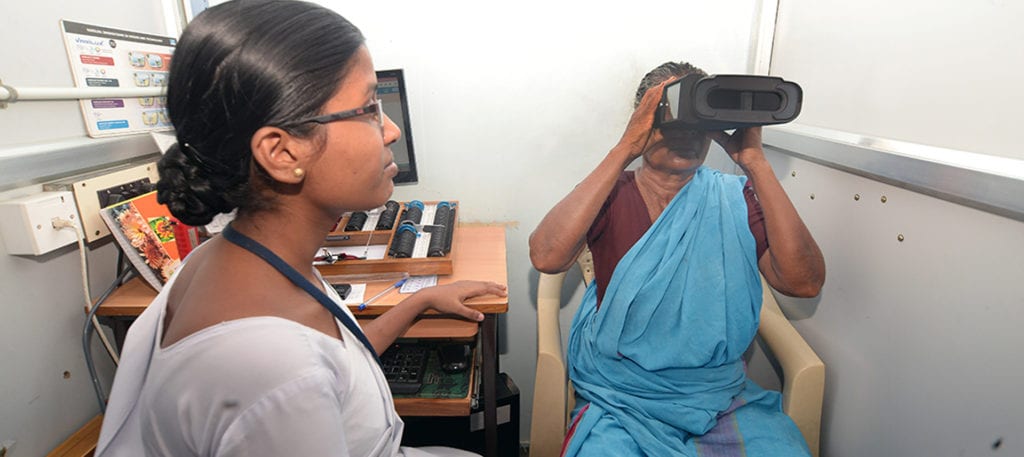
by Paul Scott
Next Billion
This time last year, Shivang Dave and his colleague Aaron Chang were sitting at a table in the District Architecture Center in downtown Washington, D.C., patiently taking questions as they watched a rotating group of engineers, industrial designers, manufacturing and supply chain experts, and journalists tinker with the oversized pair of binoculars they brought with them. Dave and Chang were representing PlenOptika, an affordable medical device startup. The “binoculars” they were presenting at the American Society of Mechanical Engineers (ASME)’s ISHOW hardware competition in D.C. that day were actually a rapid eye screening device that their team had developed to make vision care more affordable and accessible in underserved places.
PlenOptika has had a busy year since then: The company has been working its way through the U.S. and European regulatory approval processes for its device, which is called the QuickSee. The team expects to clear final approval in the coming months. It also officially began selling the QuickSee in India in February. “It’s been really well received,” says Dave, who serves as PlenOptika’s CEO. “People like that it’s fast and easy, and accurate.”
Those milestones have been a long time in the making for PlenOptika’s team, which got its start in 2011. The founding team, which includes Dave, Nicholas Durr, Daryl Lim and Eduardo Lage, met as engineering postdoctoral fellows at the Madrid-MIT M+Visión Consortium. The program was a five-year partnership between the government of Madrid and MIT, with a mission to build entrepreneurial activity around underserved global health needs. The newly formed team discovered that glasses were one of those needs.
Are you ready to learn how to use QuickSee Free / Free Pro effectively? Tell us about yourself and your circumstances and we will reach out to arrange a training session with you.